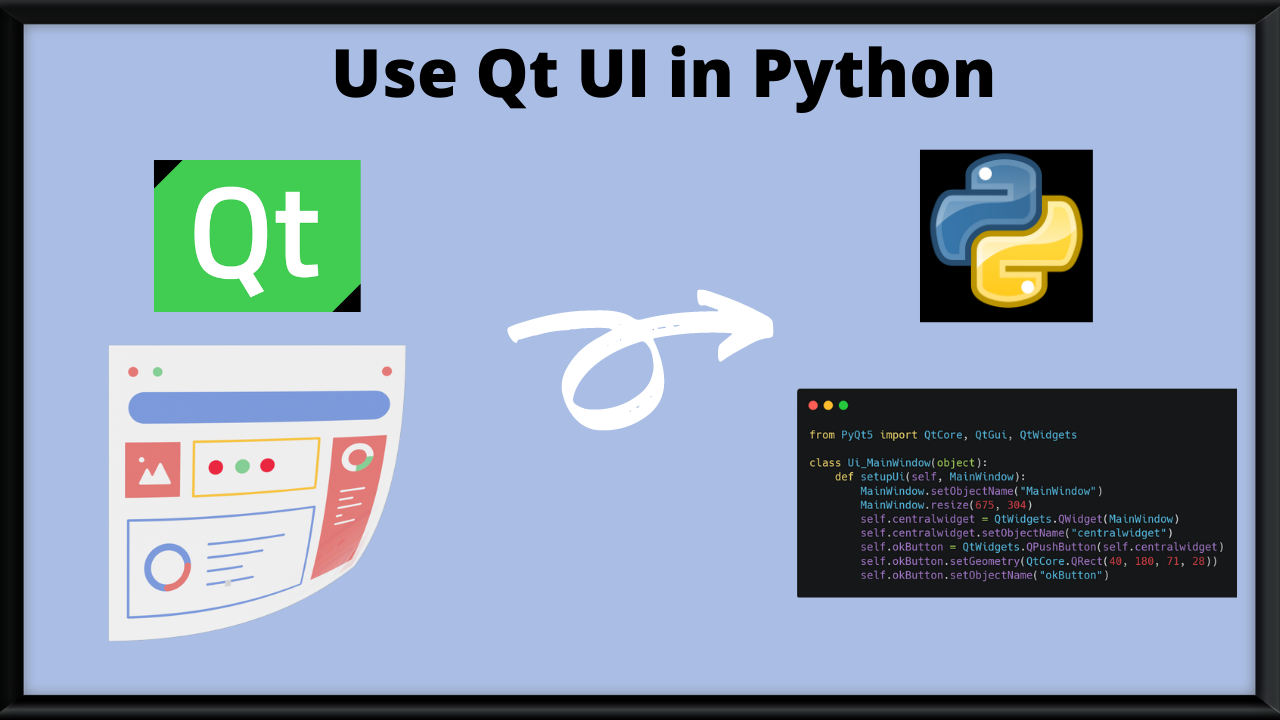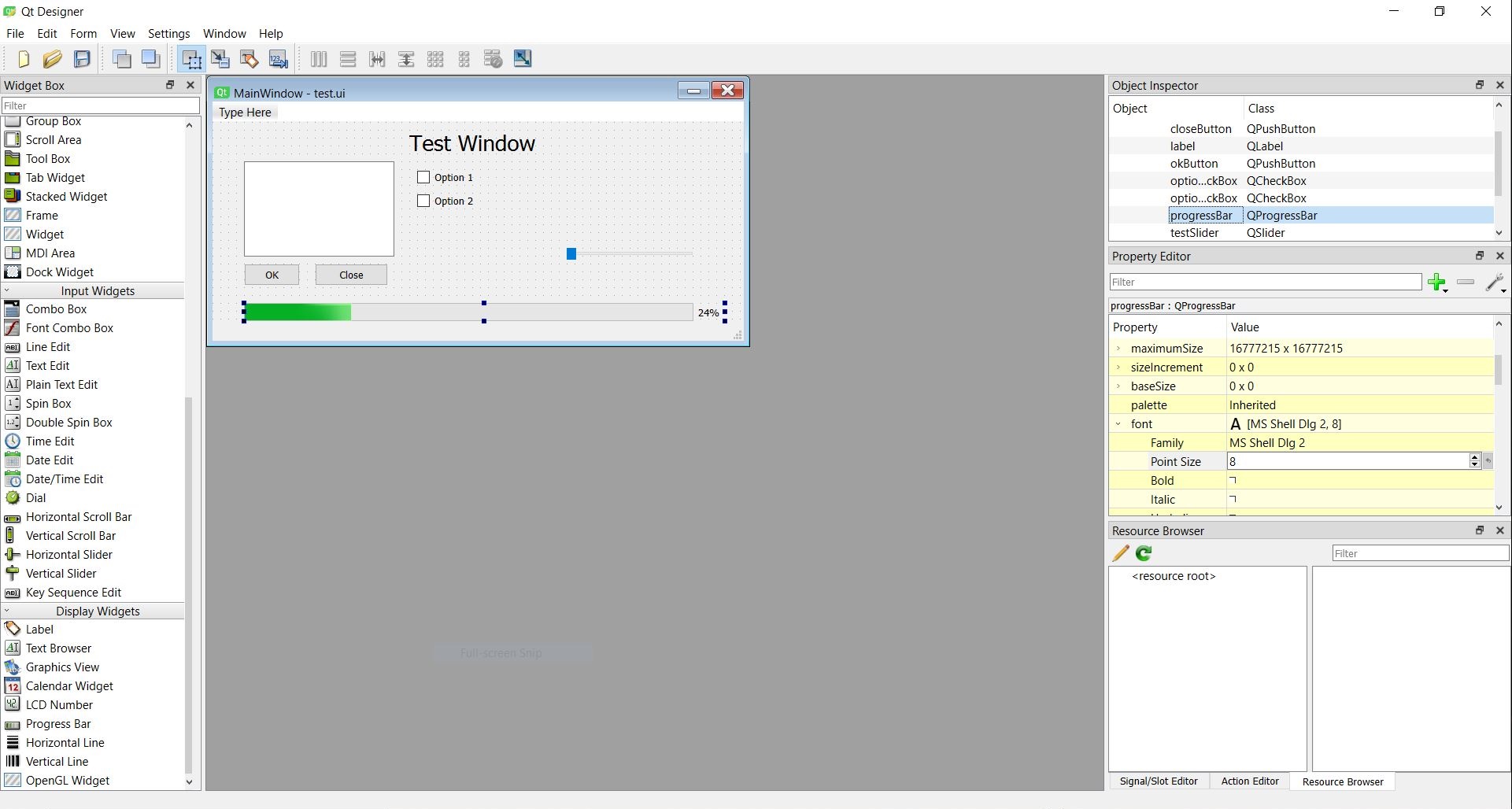6 min to read
Create Awesome GUI application in Python
Learn to use create a GUI applications in python using PyQt and Qt Designer.

Creating applications can be quite challenging. Each OS has its own libraries to create GUI applications and learning all of them is not a simple task. That is why it’s better to write code that can work across platforms.
Python to the rescue
Python has tons of different libraries which can help you create amazing applications which will work across platforms. Two of the majorly used libraries are PyQt and PySide. In this blog, we will explore PyQt.
Note: PyQt and PySide are very similar in terms of coding, refer to the documentation of both to read more about them.
Github Link: https://github.com/harshmittal2210/youtubeProjects/tree/master/PyQt
Create Design
Creating design by writing code and then testing can become quite cumbersome, so for this, we will take the help of the Qt designer.
Learn more about Qt: www.qt.io
https://riverbankcomputing.com/software/pyqt/intro

In the above image, a basic UI is created with push buttons, progress bar, check box, text window, slider bar and some labels.
You can play around and create your own UI
Note: Keep the correct object name in Object Inspector (Left side up)
Method 1 - Import UI in python
from PyQt5 import QtWidgets, uic
import sys
class NetworkUi(QtWidgets.QMainWindow):
def __init__(self):
super(NetworkUi,self).__init__() #Call the inherited classes __init__ method
uic.loadUi('test.ui', self)
self.show()
app = QtWidgets.QApplication(sys.argv)
window = NetworkUi()
app.exec_()
With the help of the above code, you can directly call the UI file created and use it.
Method 2 - Convert UI into python code
While installing PyQt, an application is also installed called pyuic which converts UI files into python code.
You can also look for this application in the GitHub Link.
$ pyuic5.exe -x "test.ui" -o "test.py"
from PyQt5 import QtCore, QtGui, QtWidgets
class Ui_MainWindow(object):
def setupUi(self, MainWindow):
MainWindow.setObjectName("MainWindow")
MainWindow.resize(675, 304)
self.centralwidget = QtWidgets.QWidget(MainWindow)
self.centralwidget.setObjectName("centralwidget")
self.okButton = QtWidgets.QPushButton(self.centralwidget)
self.okButton.setGeometry(QtCore.QRect(40, 180, 71, 28))
self.okButton.setObjectName("okButton")
self.closeButton = QtWidgets.QPushButton(self.centralwidget)
self.closeButton.setGeometry(QtCore.QRect(130, 180, 93, 28))
self.closeButton.setObjectName("closeButton")
self.label = QtWidgets.QLabel(self.centralwidget)
self.label.setGeometry(QtCore.QRect(250, 0, 171, 51))
font = QtGui.QFont()
font.setPointSize(17)
self.label.setFont(font)
self.label.setObjectName("label")
self.textEdit = QtWidgets.QTextEdit(self.centralwidget)
self.textEdit.setGeometry(QtCore.QRect(40, 50, 191, 121))
self.textEdit.setObjectName("textEdit")
self.testSlider = QtWidgets.QSlider(self.centralwidget)
self.testSlider.setGeometry(QtCore.QRect(450, 160, 160, 16))
self.testSlider.setOrientation(QtCore.Qt.Horizontal)
self.testSlider.setObjectName("testSlider")
self.option1CheckBox = QtWidgets.QCheckBox(self.centralwidget)
self.option1CheckBox.setGeometry(QtCore.QRect(260, 60, 71, 20))
self.option1CheckBox.setObjectName("option1CheckBox")
self.progressBar = QtWidgets.QProgressBar(self.centralwidget)
self.progressBar.setGeometry(QtCore.QRect(40, 230, 611, 23))
self.progressBar.setProperty("value", 24)
self.progressBar.setObjectName("progressBar")
self.option2CheckBox = QtWidgets.QCheckBox(self.centralwidget)
self.option2CheckBox.setGeometry(QtCore.QRect(260, 90, 75, 20))
self.option2CheckBox.setObjectName("option2CheckBox")
MainWindow.setCentralWidget(self.centralwidget)
self.menubar = QtWidgets.QMenuBar(MainWindow)
self.menubar.setGeometry(QtCore.QRect(0, 0, 675, 26))
self.menubar.setObjectName("menubar")
MainWindow.setMenuBar(self.menubar)
self.statusbar = QtWidgets.QStatusBar(MainWindow)
self.statusbar.setObjectName("statusbar")
MainWindow.setStatusBar(self.statusbar)
self.retranslateUi(MainWindow)
QtCore.QMetaObject.connectSlotsByName(MainWindow)
def retranslateUi(self, MainWindow):
_translate = QtCore.QCoreApplication.translate
MainWindow.setWindowTitle(_translate("MainWindow", "MainWindow"))
self.okButton.setText(_translate("MainWindow", "OK"))
self.closeButton.setText(_translate("MainWindow", "Close"))
self.label.setText(_translate("MainWindow", "Test Window"))
self.option1CheckBox.setText(_translate("MainWindow", "Option 1"))
self.option2CheckBox.setText(_translate("MainWindow", "Option 2"))
if __name__ == "__main__":
import sys
app = QtWidgets.QApplication(sys.argv)
MainWindow = QtWidgets.QMainWindow()
ui = Ui_MainWindow()
ui.setupUi(MainWindow)
MainWindow.show()
sys.exit(app.exec_())
As you can see in the above code all the object names are the same as given in the Qt Designer.
Read the documentation carefully for better understanding. A much more detailed explanation will also e given in future blogs.
LinkedIn : www.linkedin.com/in/harshmittal2210
Github : www.github.com/harshmittal2210




Comments